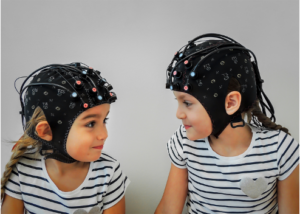Childhood and adolescence are characterized by heightened neural plasticity—the brain’s ability to change in response to experience. This plasticity brings both opportunity and risk to the developing brain. On the one hand, plasticity facilitates learning and allows children to be highly adaptable to their environment. On the other hand, this heightened plasticity can also have costs for children who encounter adversity—including consequences for academic achievement, socioemotional development, and mental health. Research in the Mind in Development (MIND) Lab at Smith College focuses on how the brain develops to support complex cognitive functions like attention and memory, and how early life adversity alters neurocognitive development in ways that contribute to difficulties in school and mental health problems. We use tools in cognitive neuroscience and developmental psychology to uncover how aspects of a child’s environment—especially those associated with socioeconomic status, such as cognitive stimulation and exposure to violence—influence cognitive, socioemotional, and neural development from preschool to adolescence.
The MIND lab has three specific branches of our research: 1) how the developing brain supports higher-order cognitive functions, such as attention, memory, and executive function; 2) the environmental, cognitive, and neural mechanisms that explain socioeconomic disparities in academic achievement; and 3) and factors that promote resilience and adaptive functioning among children who have experienced adversity.

How Do We Measure The Brain?
Our lab utilizes functional near infrared spectroscopy (fNIRS) to measure brain activity in the developing brain. fNIRS is a safe method where we measure brain activity using light sensors (called “optodes”) placed on your child’s scalp. When a brain region is activated, the body sends more oxygenated blood to that part of the brain. The fNIRS system can pick up these changes in blood oxygen by measuring how much near-infrared light is absorbed by the optodes while children do various tasks. This brain imaging technique is extremely safe and is commonly used in babies and young children. It does not involve radiation and the light emitted from the laser is very low intensity. The intensity of the light is less than the amount absorbed during typical outdoor activities and is well below the American National Standards Institute limit for long-term exposure to infrared light. Therefore, this exposure is considered harmless.
